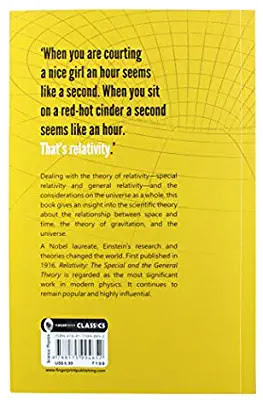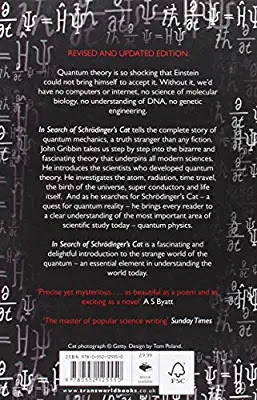PHYSICS BOOKS FOR UNDER GRAGUATE STUDENTS
1. Feynman lactures on physics
Timeless and collectible, The Feynman Lectures on Physics bundle are essential reading, not just for students of Physics, but for anyone seeking an insightful introduction to the field from the inimitable Richard P. Feynman.These carefully selected books will enable science graduates to master their subject and will prove to be ideal companions in their academic journeys.
2. Mathematical methods for physicists - Arfken
One of the main features of the book is that there are ample examples illustrating each concept in the book. The writer's emphasis has been on improving the problem solving capability of the students. Complex concepts have been explained with the help of detailed and labelled diagrams. The book also contains proof of some important theorems which are used in physics. Some new topics have also been added to the seventh edition of the book. for example, a new chapter on the green's function, thorough explanation on contour integration, explanation of orthogonal polynomials and detailed discussion on partial differential equations are included.
3. Introduction to Machenics - Kepler & Kolenkou
An Introduction To Mechanics, by Robert J. Kolenkow and Daniel Kleppner, is a comprehensive elaboration of mechanics in the field of Physics. This book is primarily for the students of an undergraduate course in Physics. In this book, the basic concepts related to the mechanics of Physics are elaborated. The presentation makes it easy to understand from the standpoint of the student who has a general knowledge about calculus and fundamental mathematics.
4. Introduction to Electrodynamics - D.J.Griffth
This book is known for its clear, concise, and accessible coverage of standard topics in a logical and pedagogically sound order. The highly polished Fourth Edition features a clear, accessible treatment of the fundamentals of electromagnetic theory, providing a sound platform for the exploration of related applications (ac circuits, antennas, transmission lines, plasmas, optics, etc.). Its lean and focused approach employs numerous new examples and problems.
5. Introduction to Quantum Mechanics - D.J.Griffth
Changes and additions to the new edition of this classic textbook include a new chapter on symmetries, new problems and examples, improved explanations, more numerical problems to be worked on a computer, new applications to solid state physics, and consolidated treatment of time-dependent potentials. Provides clear and accessible explanations of the foundations of quantum mechanics, using an attractive and informal style It is thorough, with an appropriate amount of mathematical rigor and a good variety of examples and problems Students emerge with a confident understanding of what the theory says and how to apply it, a solid foundation for more advanced work, and an appreciation for one of the greatest products of the human mind.
6. Heat & Thermodynamics - Zeemansky
The new volume of Heat and Thermodynamics endeavours to maintain the original classicalflavour while at the same time ensures that novel advancements in the subject are also brought tothe forefront. This textbook is a bridge between thermal physics and the more challenging world oftime- dependent non-equilibrium physics
7. Modern Physics - Arthur Beiser
The balance in this book leans more toward ideas than toward experimental methods and practical applications, because the beginning students are better served by a conceptual framework rather than by a mass of details. To help build a conceptual framework, a plethora of solved and unsolved problems, varying from simple to complex, have been incorporated.
8. Introduction to Special Relativity - Robert Resnick
This book gives an excellent introduction to the theory of special relativity. Professor Resnick presents a fundamental and unified development of the subject with unusually clear discussions of the aspects that usually trouble beginners. He includes, for example, a section on the common sense of relativity. His presentation is lively and interspersed with historical, philosophical and special topics (such as the twin paradox) that will arouse and hold the reader's interest. You'll find many unique features that help you grasp the material, such as worked-out examples, summary tables, thought questions and a wealth of excellent problems. The emphasis throughout the book is physical.
9. Introduction to Elementry Particles - D.J.Griffth
This is the first quantitative treatment of elementary particle theory that is accessible to undergraduates. Using a lively, informal writing style, the author strikes a balance between quantitative rigor and intuitive understanding. The first chapter provides a detailed historical introduction to the subject. Subsequent chapters offer a consistent and modern presentation, covering the quark model, Feynman diagrams, quantum electrodynamics, and gauge theories. A clear introduction to the Feynman rules, using a simple model, helps readers learn the calculational techniques without the complications of spin. And an accessible treatment of QED shows how to evaluate tree-level diagrams. Contains an abundance of worked examples and many end-of-chapter problems.
10. Revolution in 20 th Century Physics - D.J.Griffth
The conceptual changes brought by modern physics are important, radical and fascinating, yet they are only vaguely understood by people working outside the field. Exploring the four pillars of modern physics – relativity, quantum mechanics, elementary particles and cosmology – this clear and lively account will interest anyone who has wondered what Einstein, Bohr, Schrödinger and Heisenberg were really talking about. The book discusses quarks and leptons, antiparticles and Feynman diagrams, curved space-time, the Big Bang and the expanding Universe. Suitable for undergraduate students in non-science as well as science subjects, it uses problems and worked examples to help readers develop an understanding of what recent advances in physics actually mean.
If you have any question then feel free to ask in the comment section.


































